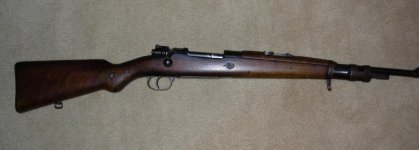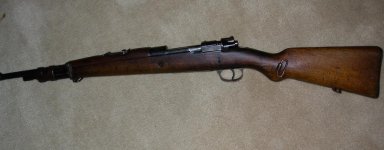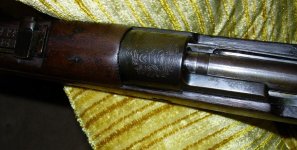I happen to think the 7x57 is just about the most perfect cartridge ever designed. I don't know why the 8x57 was even developed when the 7 is better and was already here. The .284" bullet has great BC in heavier weights and recoil is mild.
A few years ago some mail order outfit was selling military 7x57 dated 1970 at 6 cents per round. I think I bought 4,000 rounds. This is the most amazingly consistent ammo I have ever seen. Uses a 139 grain FMJ pointed BT at 2925 FPS. The maximum deviation I have observed over the chrono is 2 FPS. Yes, I said 2 FPS.
Beautiful rifles SP. Your custom rifles are beautiful and would
still be so had you chosen some other cartridge for them. You
don't know why the 8X57 was developed? Well Germany
didn't develop the 8X57 for us actually. The 7X57 better
and already here? Umm..not quite. The 8X57 was developed
in 1888 and introduced in the Commission rifle as part of the
general trend toward smaller bores and away from the larger
bore black powder cartridges. Some other countries had
already based cartridges on the 8mm bore size when Germany
developed the 8mm Mauser ctg. About a year later they went
a little smaller with the 7.65 Mauser ctg and then in 1892
they developed the even smaller 7X57 mm ctg. The popular
7X57 resulted in large rifle contracts for the Mauser Co.
When the 98 Mauser was designed the 8X57 ctg was well
established in Germany and there was no advantage to the
7X57 that would justify the cost and trouble of switching to
the smaller round. The 7X57 is a fine hunting ctg but when
both are loaded to their full potential the 8X57 simply over
powers it's little brother and is the better big game ctg.
If your surplus 7X57 ammo actually chronographs 2925 fps
with an ES of only 2 fps out of an actual rifle barrel it is
indeed remarkable, and remarkably hot!









